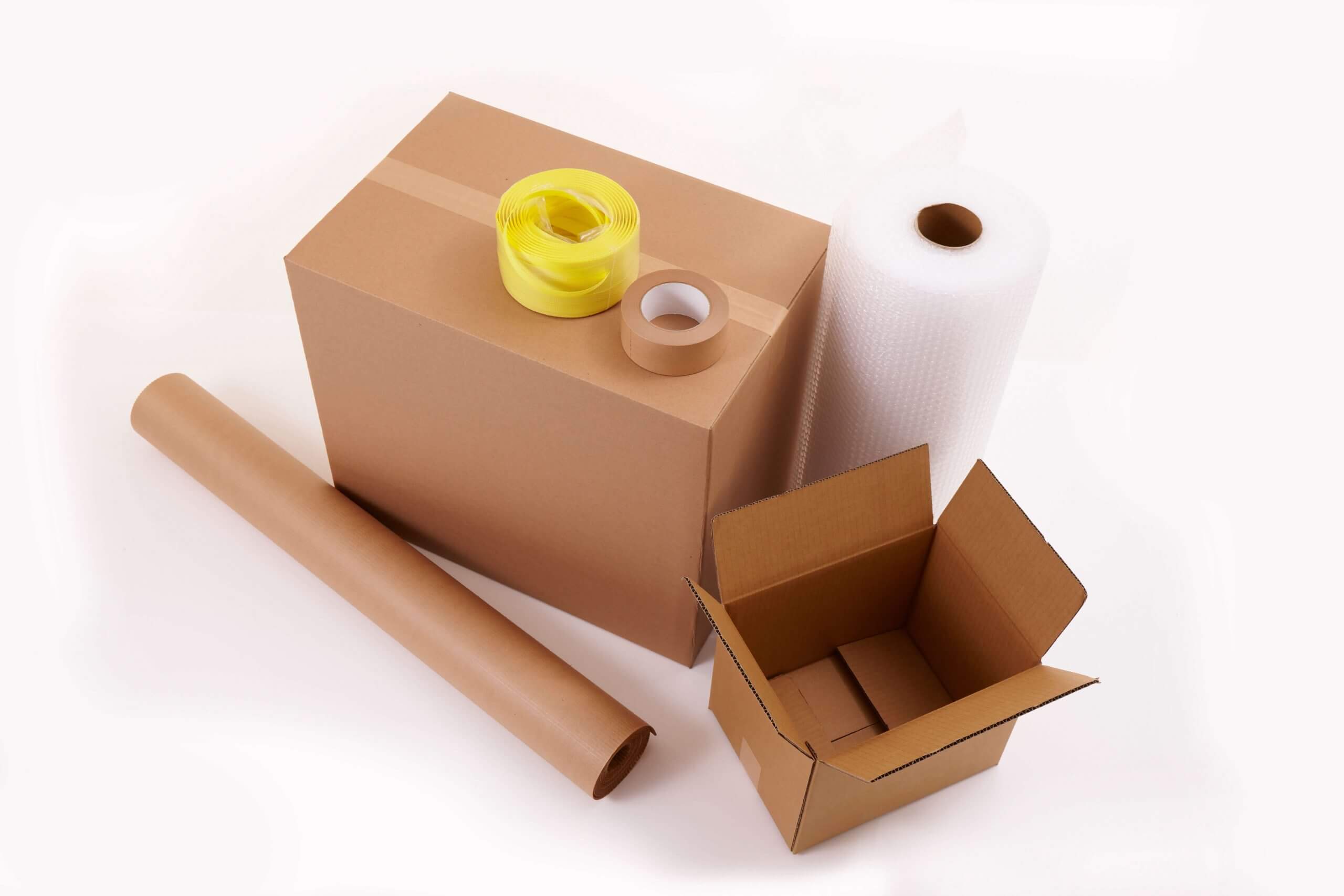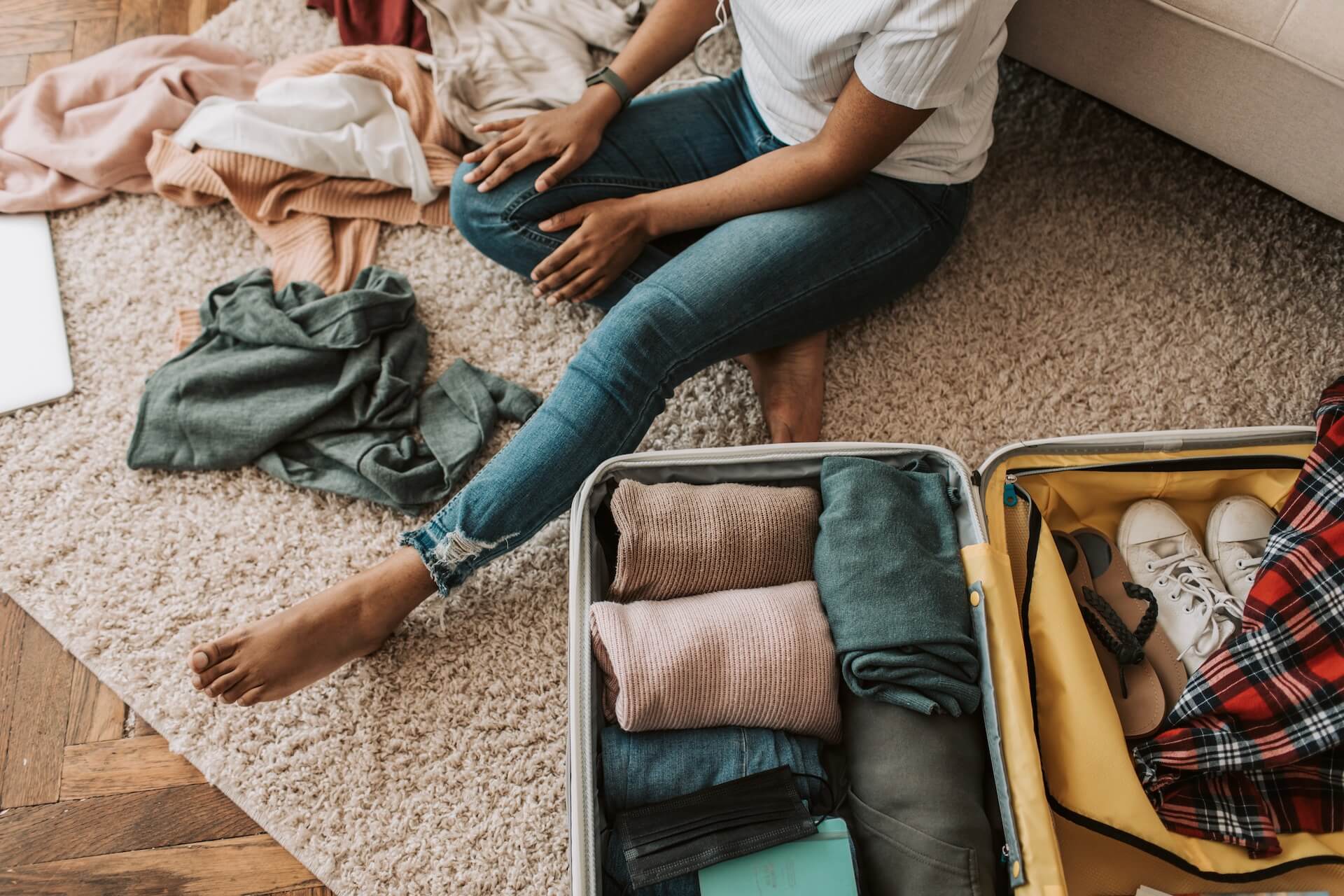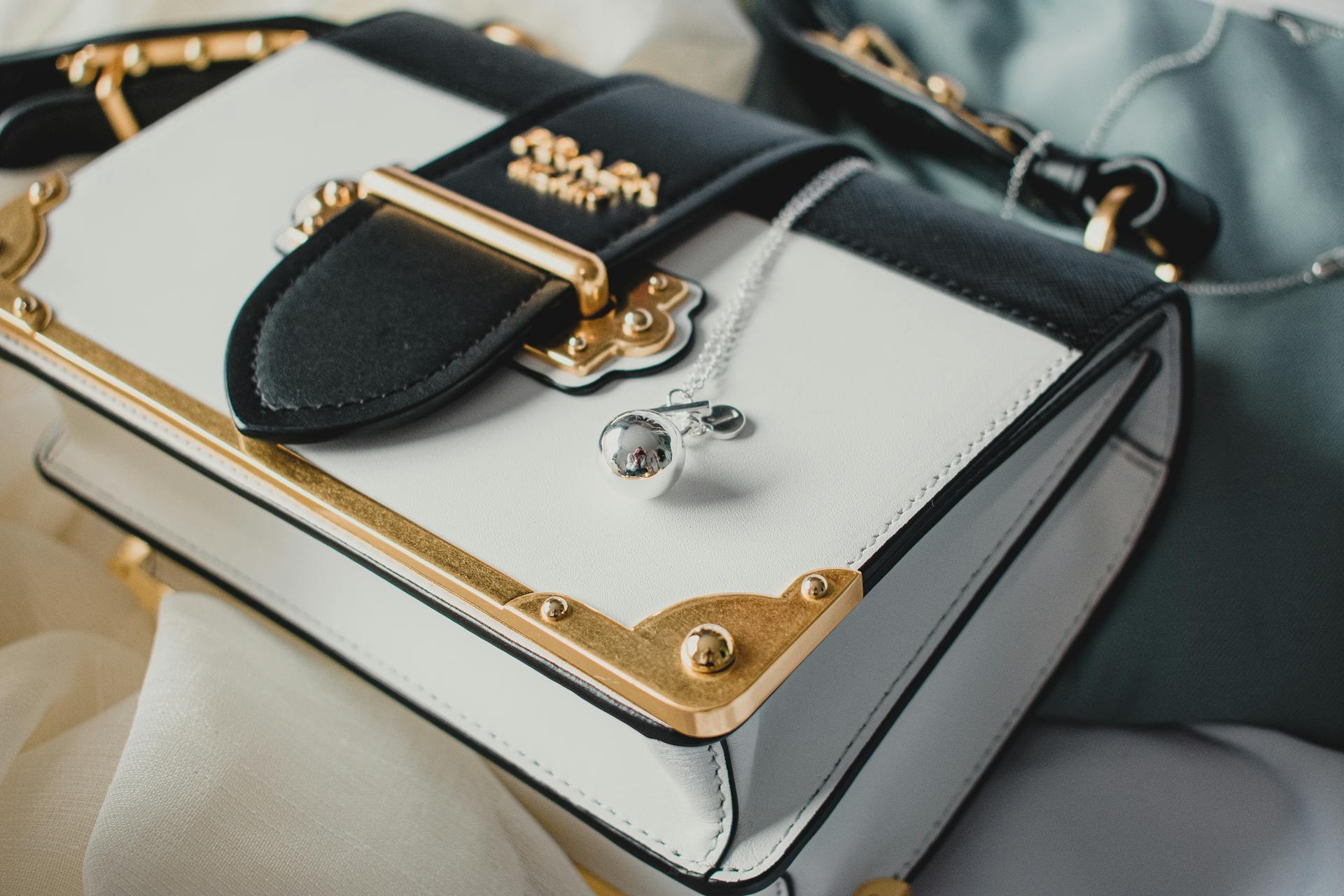Welcome to the ultimate guide on how to pack for a move like a pro! Moving can be as chaotic as a game of Tetris, but fear not! We’ve got the perfect strategy to turn your packing prowess up a notch and make your relocation a smooth, stress-free experience. Whether you’re a seasoned mover or a first-timer, these tips and tricks will have you packaging like a champ in no time. So, grab your cardboard boxes, and let’s master the art of moving!

Packing for a move requires careful planning and organization. Start by decluttering and sorting your belongings, donating or discarding items you no longer need. Gather supplies like sturdy boxes, bubble wrap, and tape. Pack room by room, labeling each box to make unpacking easier. Protect fragile items with proper wrapping. Utilize space efficiently and fill gaps in boxes to prevent shifting during transportation. Lastly, pack a “moving day essentials” box with items you’ll need immediately upon arrival.
Planning and Preparation Are a First Step
Embarking on an international relocation? Exciting times await you! To make this journey smoother than ever, the key is to plan a relocation with precision and enthusiasm. Start early by researching your destination’s customs regulations and visa requirements.
Create a detailed moving abroad checklist to keep track of important tasks. Coordinate with a reputable moving company to relocate efficiently. Don’t forget to notify essential parties about your change of address. With proper planning and a positive mindset, you’ll set the stage for a stress-free and successful international move.
Take Inventory of Your Items
Before living overseas begins, it’s essential to take stock of your belongings and decide what to keep and what to discard. Start by categorizing your possessions based on their importance and sentimental value. Consider the practicality of shipping certain items abroad. Items like family heirlooms or treasured mementos may hold special significance.
However, bulky or easily replaceable belongings might be better left behind. Downsizing will not only save on relocation costs but also streamline your new living space. Remember, embracing minimalism can open doors to new adventures and experiences in your overseas journey.
Declutter and Organize Your Belongings
Relocation stress can be minimized by decluttering and organizing your belongings efficiently. As you sort through your possessions, consider donating gently-used items to organizations like The Salvation Army or Goodwill.
Not only will you be lightening your load but also contributing to a noble cause. Invest in sturdy packing materials and label boxes with contents and destination rooms. Prioritize relocation essentials like important documents, daily necessities, and valuables.
By adopting a systematic approach and letting go of unnecessary baggage, you’ll pave the way for a smooth and transformative relocation experience. If you need more tips on decluttering and organization, please watch this video:
Gather Packing Supplies
When moving internationally, having the right supplies is crucial for a successful relocation. Here’s a detailed list of essential packaging materials to get you started:
- Sturdy boxes: Invest in durable cardboard boxes of various sizes to accommodate different items.
- Bubble wrap and paper: Protect fragile belongings, such as glassware and electronics, with bubble wrap and paper.
- Packing tape and dispenser: Securely seal boxes with high-quality tape and use a dispenser for easier application.
- Packing peanuts or foam sheets: Use peanuts or foam sheets to fill empty spaces and prevent shifting.
- Moving blankets or furniture covers: Safeguard furniture and large possessions with blankets or furniture covers.
- Markers and labels: Clearly label each box with its contents and the destination room.
- Packing knife or scissors: Keep a knife or scissors handy for opening boxes during unpacking.
You can easily find these packaging supplies at local supply stores, online retailers, or specialty packaging and shipping stores. Ensure you’ve sorted and organized your belongings for the relocation day and preparation for international movers.

Embrace Various Packing Strategies
When moving overseas, organizing your packaging to move without problems is crucial for a seamless experience. Embrace different packaging strategies to suit your needs and preferences. One effective approach is the “room-by-room” method, where you break down tasks by each room.
Another strategy is to categorize belongings based on their type or frequency of use, making unpacking after the relocation a breeze. You can also consider packaging similar-sized items together or using color-coded labels to identify contents quickly. By adopting these smart strategies, you’ll save time, minimize stress, and ensure a well-organized and successful relocation.
Room-By-Room Approach
A room-by-room approach is a fantastic way to make relocating easier and stay organized throughout the process. Start with one room at a time and focus on decluttering first. Donate or discard items you no longer need to lighten your load.
Pack belongings from each room together, keeping related belongings grouped. For example, pack kitchen utensils and cookware in one box and books and decorations in another. Label each box with its content and the destination room, simplifying unpacking later.
This method helps you tackle the packaging process efficiently, reducing chaos and making your new home setup a breeze.

Utilize Appropriate Boxes and Containers
To ensure the safety of your belongings during the move, it’s crucial to utilize appropriate cardboard boxes and containers. Invest in sturdy, high-quality cardboard boxes of various sizes to accommodate different items.
Use specialized boxes for fragile items, such as dish packs or wardrobe boxes. Utilize plastic containers with secure lids for belongings that need extra protection. When packaging heavy items like books, opt for smaller boxes to prevent overloading and potential damage.
By selecting the right containers for your belongings, you’ll minimize the risk of breakage and make unpacking a smoother process.
Don’t Forget Labeling and Organizing
Labeling and organizing will significantly simplify your relocation. Clearly label each box with its contents and the room it belongs to. Color-coded labels can also be useful for quick identification. Create an inventory list of all your packed boxes, making it easier to keep track of your belongings during the move.
Designate a “relocation day essentials” box containing necessities like toiletries, important documents, and daily items. Keep this box separate from other packed possessions to access it easily upon arrival.

Consider Adding Extra Protection for Valuable and Delicate Items
It’s crucial to give special attention to valuable and delicate items. To protect them during transit, use proper padding and cushioning techniques. Wrap fragile belongings like glassware in bubble wrap or paper to prevent breakage.
For artwork, consider using custom-sized art boxes or create protective corners using cardboard. When it comes to electronics, disassemble them if possible and package them in their original boxes. If original boxes are not available, use sturdy boxes with ample padding.
Last but not least, remember to label boxes with delicate possessions as “Fragile” to ensure careful handling. By following these tips on how to pack electronics and how to pack glasses, you’ll ensure that your most precious possessions arrive at your new home intact.
Clothing and Wardrobe Packing Won’t Be Too Stressful
Packaging your clothes and wardrobe can be stress-free with the right techniques. First, consider decluttering your wardrobe and donating or discarding clothes you no longer wear. To maximize space, roll your clothes instead of folding them. This saves space and minimizes wrinkles.
For bulkier clothes like winter coats, vacuum-sealing bags can be a game-changer. Separate seasonal or infrequently used clothes from everyday wear for easier unpacking. Keep your clothes wrinkle-free by using tissue paper or placing dryer sheets among the layers. Utilize luggage and suitcases to transport some of your clothes, saving on box space.

You Should Have Essential Items and a Survival Kit by Your Side
When adjusting to a new country, having essential possessions and a survival kit readily accessible is crucial. Before you pack up everything, set aside a box with items you’ll need immediately upon arrival at your new home. This survival kit should include basic toiletries, a change of clothes, important documents, medications, and some non-perishable snacks.
Furthermore, have local currency, a universal travel adapter, and a portable phone charger handy to stay connected during your transition. Keeping these essential items within reach will provide comfort and convenience, helping you navigate the initial days in your new environment with ease.
Moving Heavy and Bulky Furniture Should Be Left to International Movers
When it comes to moving heavy and bulky furniture during an overseas relocation, enlisting the services of professionals can offer numerous benefits. International movers have the expertise and experience to handle large furniture items with care and precision. They are equipped with specialized materials and techniques to ensure your furniture is well-protected throughout the journey.
Opting for packing services from an overseas moving company, such as I Love International Moving, can save you time and effort, allowing you to focus on other aspects of your relocation.
Moreover, international moving services can be a cost-effective and secure option for transporting your heavy belongings overseas.
Use More Than One International Moving Service
Consider hiring a reputable international moving company that can handle the logistics of transporting your household goods, providing packing services, and coordinating shipping overseas. Such companies often have the expertise to navigate customs regulations and ensure a smooth transition across borders.
For specific items like vehicles or large pieces of furniture, you might also benefit from using specialized shipping services that cater to these unique requirements. By combining the strengths of different relocation services, you can tailor your relocation to suit your needs, ensuring a seamless and stress-free journey to your new destination.

Follow Our Ultimate How to Pack for a Move Guide, and You’ll Relocate Without a Fuss
From embracing various packing techniques to organizing your belongings with precision, we’ve covered all the essentials to ensure a smooth transition to your new home. Remember to protect your valuable and delicate possessions, and create a separate kit with essential items to ease your adjustment to a new country.
When it comes to moving heavy furniture and handling international shipping, entrust the task to experts like I Love International Moving, a trusted overseas shipping company. With our expertise and dedication, we’ll make your international relocation effortless and successful. Contact us now, and let’s embark on this exciting journey together!
FAQ
Deciding whether to do everything on your own or hire professionals depends on various factors. If you have a small household with minimal fragile belongings and are comfortable with the process, boxing everything up on your own might be a cost-effective option. However, for larger moves, valuable or delicate possessions, it’s wise to hire professional packers.
They have the expertise and materials to ensure the safety of your belongings and streamline the process. Hiring professionals can save you time and reduce the stress associated with packing, ensuring a smoother and more efficient relocation.
Ensuring the safety of fragile belongings during the move requires careful packaging and protection. Use sturdy boxes and plenty of cushioning materials like bubble wrap or paper to wrap delicate items individually. Place extra padding between items and fill gaps in the boxes to prevent movement during transit. Label boxes containing fragile possessions as “Fragile” and instruct movers accordingly.
Consider using specialized packaging services from an overseas shipping company. Being thorough and cautious while packaging fragile items will significantly reduce the risk of breakage during the relocation.
When preparing for a relocation, it’s an excellent opportunity to declutter and part ways with items you no longer need. Consider donating usable belongings to charity organizations like Goodwill or the Salvation Army.
Alternatively, you can host a garage sale or sell belongings online to recoup some costs. Discard broken or unusable items responsibly by recycling or disposing of them properly. Downsizing will not only lighten your load but also save on materials and transportation costs, making your relocation more cost-effective and efficient.
The ideal time to start packaging for a relocation depends on the size and complexity of the relocation. As a general rule, it’s recommended to start packaging at least 4 to 6 weeks before the relocation date.
Begin with possessions you use less frequently and work your way towards daily essentials. Procrastination can lead to added stress and rushed packaging, potentially causing damage. Starting early allows you to box everything up systematically, ensuring a well-organized and smooth transition.
Staying organized during the packaging process is essential for a successful relocation. Create a detailed checklist to keep track of tasks and deadlines. Use color-coded labels or a numbering system to identify boxes belonging to different rooms.
Keep an inventory list of packed items to facilitate unpacking later. Set up a designated area for supplies to ensure everything is easily accessible. Regularly declutter and clean as you pack to maintain an organized packaging environment. By staying organized, you’ll save time and effort while making the unpacking process much more manageable.
Certain belongings are best packed separately or carried with you during the relocation for convenience and safety. Essential documents like passports, IDs, and medical records should be kept in a secure folder and transported personally.
Valuables such as jewelry, important electronics, and family heirlooms should also be carried with you to ensure their safety. Medications, toiletries, a change of clothes, and other immediate necessities should be packed in a “moving day essentials” box for easy access upon arrival. By keeping these items separate, you’ll have peace of mind knowing they are within reach and protected during the move.
If you run out of supplies, there are several options to consider. First, assess the possessions you still need to package and determine if there are alternative materials you can use. For example, you can use towels, blankets, or clothing as additional padding for fragile belongings.
Ask friends or neighbors if they have any spare boxes or materials you can borrow or purchase from them. Additionally, visit local stores or supermarkets that may have extra cardboard boxes available for recycling. If time permits, you can order packaging supplies online for quick delivery. Remember to stay resourceful and creative, and don’t hesitate to reach out to your overseas shipping company for advice or assistance.














